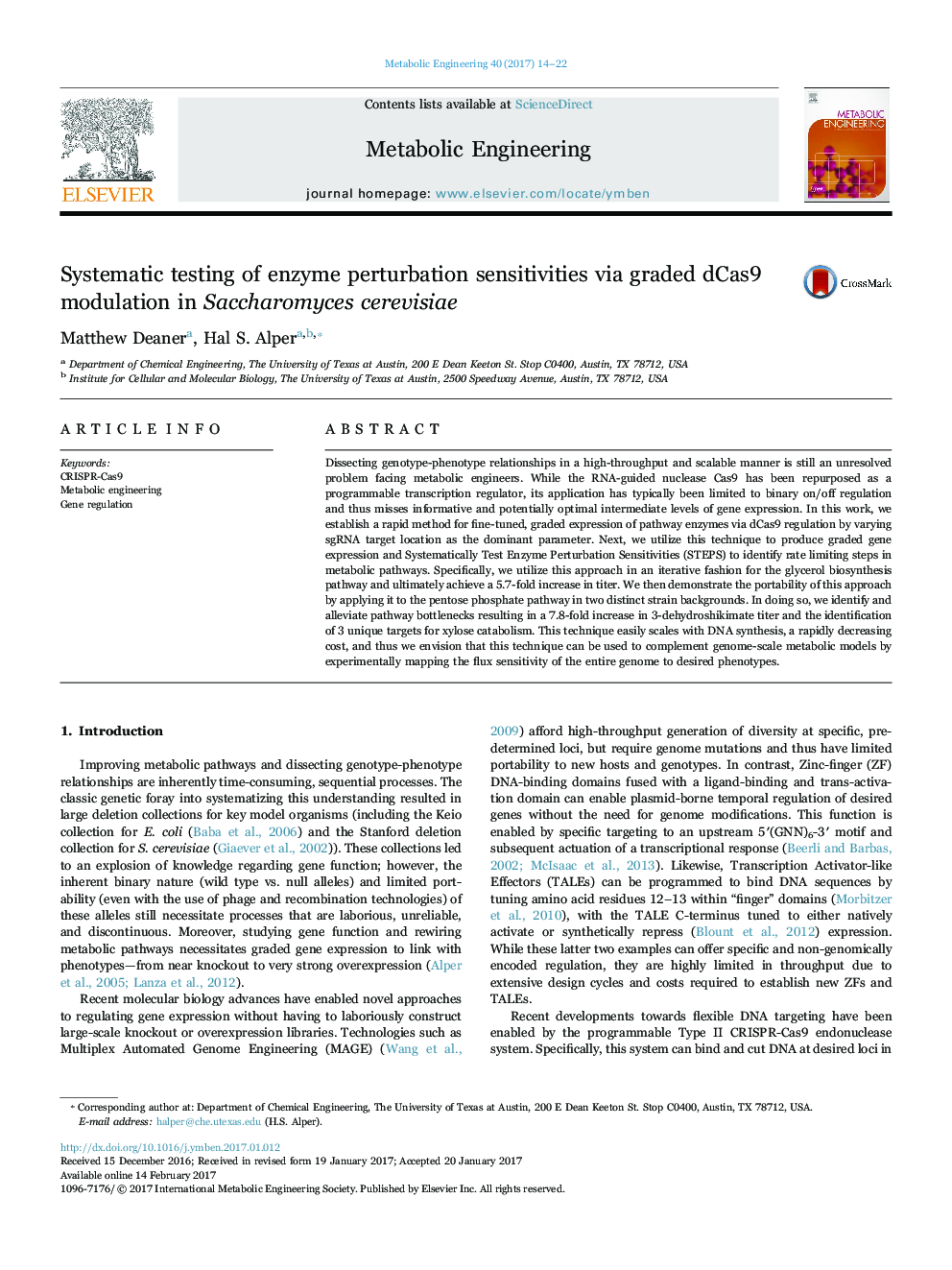| کد مقاله | کد نشریه | سال انتشار | مقاله انگلیسی | نسخه تمام متن |
|---|---|---|---|---|
| 6452698 | 1418338 | 2017 | 9 صفحه PDF | دانلود رایگان |

- Varied dCas9 proximity to yeast core promoter creates graded gene perturbations.
- STEPS method: Iteratively identify/optimize rate limiting enzymes in any background.
- STEPS improves glycerol production: 5.7-fold increase in titer over two rounds.
- Same approach improves 3-dehydroshikimate titer 7.8-fold in new strain background.
- 3 gene targets shown to be limiting for xylose catabolism at low expression.
Dissecting genotype-phenotype relationships in a high-throughput and scalable manner is still an unresolved problem facing metabolic engineers. While the RNA-guided nuclease Cas9 has been repurposed as a programmable transcription regulator, its application has typically been limited to binary on/off regulation and thus misses informative and potentially optimal intermediate levels of gene expression. In this work, we establish a rapid method for fine-tuned, graded expression of pathway enzymes via dCas9 regulation by varying sgRNA target location as the dominant parameter. Next, we utilize this technique to produce graded gene expression and Systematically Test Enzyme Perturbation Sensitivities (STEPS) to identify rate limiting steps in metabolic pathways. Specifically, we utilize this approach in an iterative fashion for the glycerol biosynthesis pathway and ultimately achieve a 5.7-fold increase in titer. We then demonstrate the portability of this approach by applying it to the pentose phosphate pathway in two distinct strain backgrounds. In doing so, we identify and alleviate pathway bottlenecks resulting in a 7.8-fold increase in 3-dehydroshikimate titer and the identification of 3 unique targets for xylose catabolism. This technique easily scales with DNA synthesis, a rapidly decreasing cost, and thus we envision that this technique can be used to complement genome-scale metabolic models by experimentally mapping the flux sensitivity of the entire genome to desired phenotypes.
Journal: Metabolic Engineering - Volume 40, March 2017, Pages 14-22